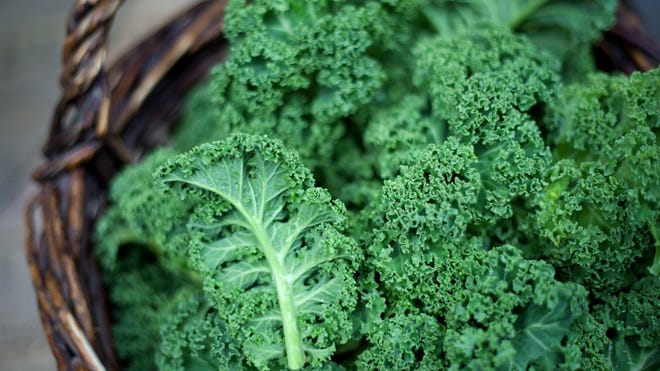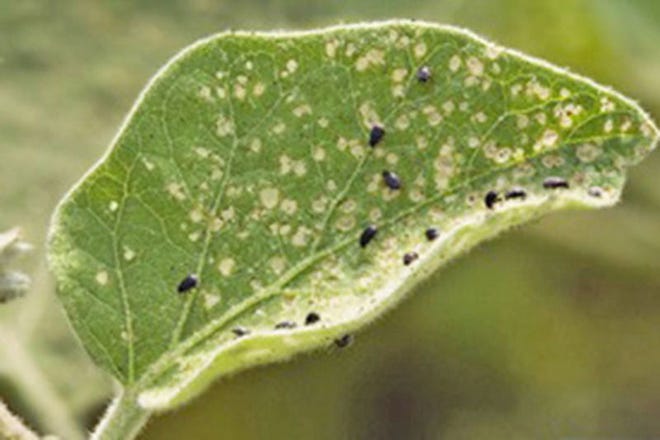What to do about kale-eating critters
Question: My outdoor garden kale plants have little holes and pits in them. How do I know what is eating my plants and how can I better protect them?
A: There are two different types of reasons why your plants can be damaged:
- Diseases such as bacterial pathogens or fungi,
- Pests such as flea beetles, cabbage worms, birds and other wildlife.
Take a close look at your plants and their surroundings. How big are the holes? Do you see insects – perhaps camouflaged – under the leaves or near the roots?
Since you are not mentioning discoloration which is a clue associated with some pests, we are assuming the leaves are otherwise green and healthy in appearance and not infected with a disease such as bacterial spot or black rot, which will discolor also the leaves; or cabbage aphids, which reveal a white waxy coating.
Here are some examples of potential parasites based on your description:
- Flea beetles. These leave many small holes. Black beetles are bright and jump like fleas.
- Cabbage worms. These leave large jagged holes in the leaves. The hairy green caterpillars turn into yellowish butterflies with a green head.
- Ringworm of crucifers. These leave holes at the bottom of the leaves that are visible from the top. The larvae are tapering at both ends and the butterflies are brownish white.
- Slugs or snails. These leave large bite holes in the leaves. Slugs and snails will also leave a slimy mark on the plant.

For more information on detecting potential kale pests, visit UC’s Integrated Pest Management for Cabbage website at https://bit.ly/3IrJUcU.
You can also send a photo of the leaves with the damage to our Master Gardener Help Line at [email protected] Our volunteers will help you identify the type of pest or disease causing the damage.

You can try one of the following solutions based on your best estimate of the cause of the damage:
- Use floating blankets or netting to deter wildlife, flea beetles and other insects. Make sure to secure the bottom to the ground.
- Water at the base of the kale to minimize fungus growth. Try not to spray the leaves.
- Invite beneficial insects such as spiders and ladybugs to control unwanted insect eggs and larvae.
- Mulch the soil to minimize splashing fungus spores on the plants.
- Use a spray containing Bacillus thuringiensis to rid plants of cabbage worms or other moth larvae.
- Apply diatomaceous earth around plants to deter snails and slugs, or use snail bait.
- Eliminate pests, such as caterpillars and beetles, with your hands and keep them away from the garden.
- Allow good air circulation between plants to reduce the spread of disease.
- Consider purchasing heat-treated seeds in the future to minimize bacterial disease.
Following:How to start new plants from hardwood cuttings, prunings
Limit sprays of insecticides or fungicides. These will damage or kill the beneficial insects that make your garden healthy and can potentially pollute the water supply.
The Shasta Master Gardeners program can be contacted by phone at 242-2219 or by email at [email protected]. The Gardener’s Office is made up of volunteers trained by the University of California to answer gardeners’ questions using information based on scientific research.


Comments are closed.